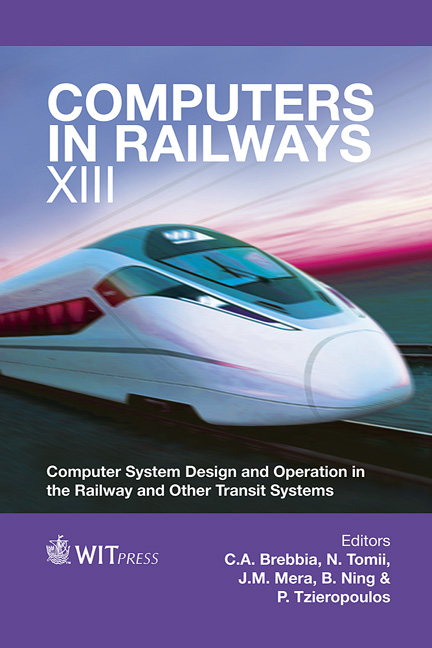Effects Of Increased Traffic Volume And Speed Heterogeneity On The Capacity Of A Railway With Dense Mixed Traffic
Price
Free (open access)
Transaction
Volume
127
Pages
13
Page Range
485 - 497
Published
2012
Size
2997 kb
Paper DOI
10.2495/CR120411
Copyright
WIT Press
Author(s)
J. Warg
Abstract
Increasing demand for train travel implies a need for improved traffic. More frequent departures and new regional stops have to be coordinated with the desire to shorten travel times for passengers and on the same line be mixed with freight operations. This paper analyses how increased traffic predicted for 2020 affects the capacity of a 400-km section of the Southern Main Line in Sweden, a highly-utilised double-track line with heterogeneous and dense traffic with low punctuality, particularly as regards high-speed trains. In a second step, the consequences of raising the maximum speed for high-speed trains from 200 to 250 km/h are analysed. The purpose of the paper is to show the effects of these measures and discuss strategies for improving punctuality and increasing timetable flexibility based on the revealed weaknesses of the system by combining timetable analysis and simulation. The evaluation shows that an increase in traffic volume and speed differences leads to a decrease in the flexibility and reliability of the timetable. The punctuality of the high-speed trains becomes unacceptably low. The tested approaches to normalise the effects of increased traffic and speed on flexibility and punctuality are shown to be insufficient. Capacity utilisation on the line is so high that recovery is not possible. Keywords: railway operation, capacity, simulation, delay, timetable flexibility, mixed traffic, Green Train, high-speed trains.
Keywords
railway operation, capacity, simulation, delay, timetable flexibility,mixed traffic, Green Train, high-speed trains





